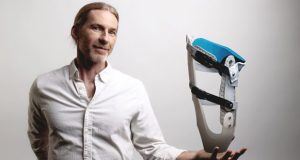A profile on Rick Nagel written for the Oklahoma Venture Forum on the subject of Adding Value to Investment Deals.
Rick Nagel is the Managing Partner of Acorn Growth Companies. This small middle-market private equity firm focuses exclusively on ladder stage and growth investments in the aerospace, defense, and intelligence sectors. The company has been around since 2000, starting as the first privately certified incubator in the state of Oklahoma. After 30 deals and on their fifth fund, the firm seeks opportunities to add value as an operating team.
“We look at 250 deals a year,” said Rick Nagel. “We do about two or three. So, we’re very picky. We invest mostly in North America and Europe.”
To boil down the selection process, Nagel explained that they focus on their strengths. Some deals are fast nos, and they get to a no quicker than they get to a yes. One of the critical filters is that they have to add value to the company.
“For us, and not every firm is like this, but for us, we want one plus one to equal seven,” said Nagel. “We’ve been driving historical performance since our internal rate of return really kind of, since the beginning on all of our platform exits, is track more than 30%.”
To maintain their high-performance level, they do this by not overpaying for anything and adding value after the close. This philosophy helps mitigate risk and drive more organic growth opportunities.
“We’ve got a lot to say grace over, so we don’t have that problem,” said Nagel. “It doesn’t mean we always get it right, but we have a pretty good batting average so far.”
Nagel advised those looking for funding to have their head screwed on straight on value and terms when making themselves look suitable for potential investors. People also need to be realistic going in on a deal. There’s a lot of great technology that never gets the funding behind it because the entrepreneurs are just too proud of it. Rick made the analogy of having a big percentage of a small pie or having a small percentage of a massive pie, which leads to having more pie on your plate.
“As much as we looked at bringing on value-added partners, I think it’s important that entrepreneurs looking for capital equally go out and find value-added partners,” said Nagel. “It’s amazing to me what they’ll do and give up to people to get a deal done. They have no value at all in helping them drive to their end results. So, you want investors that are not just passive. Typically, the younger the company is, you want more hands-on deck. I always encourage people to do value-added capital.”
Rick Nagel will be speaking at the Oklahoma Venture Forum Power Lunch on Wednesday, October 13, 2021. The event will be open to guests both in-person and virtually via ZOOM. Nagel said OVF is great for entrepreneurs and potential investors.
“My advice to anybody that might be reading this that’s not currently engaged would be to get engaged,” said Nagel. “If you’re an early-stage investor, whether you do a deal or not, you’ll see things that will make you smarter in that process by listening to these presentations.”


